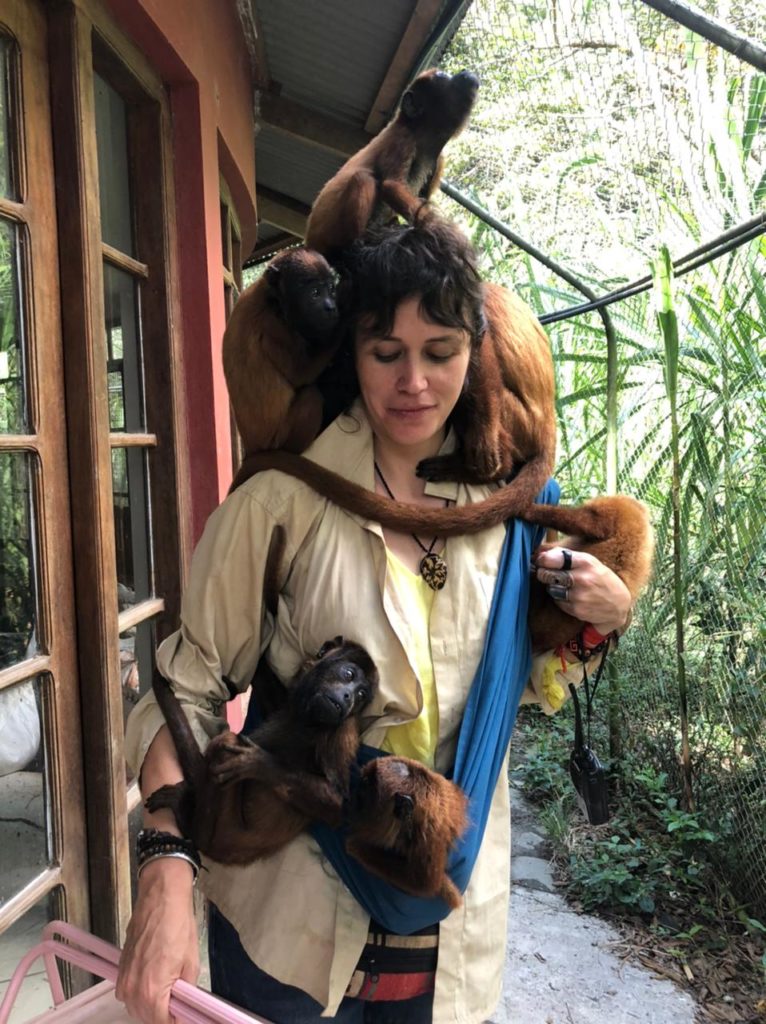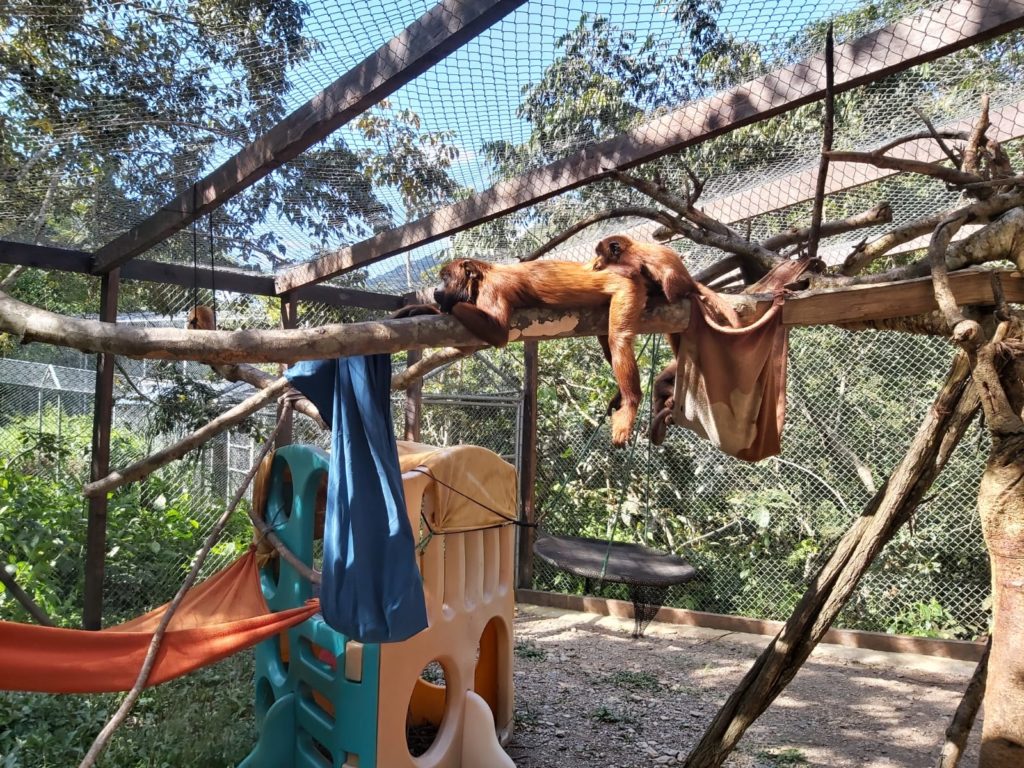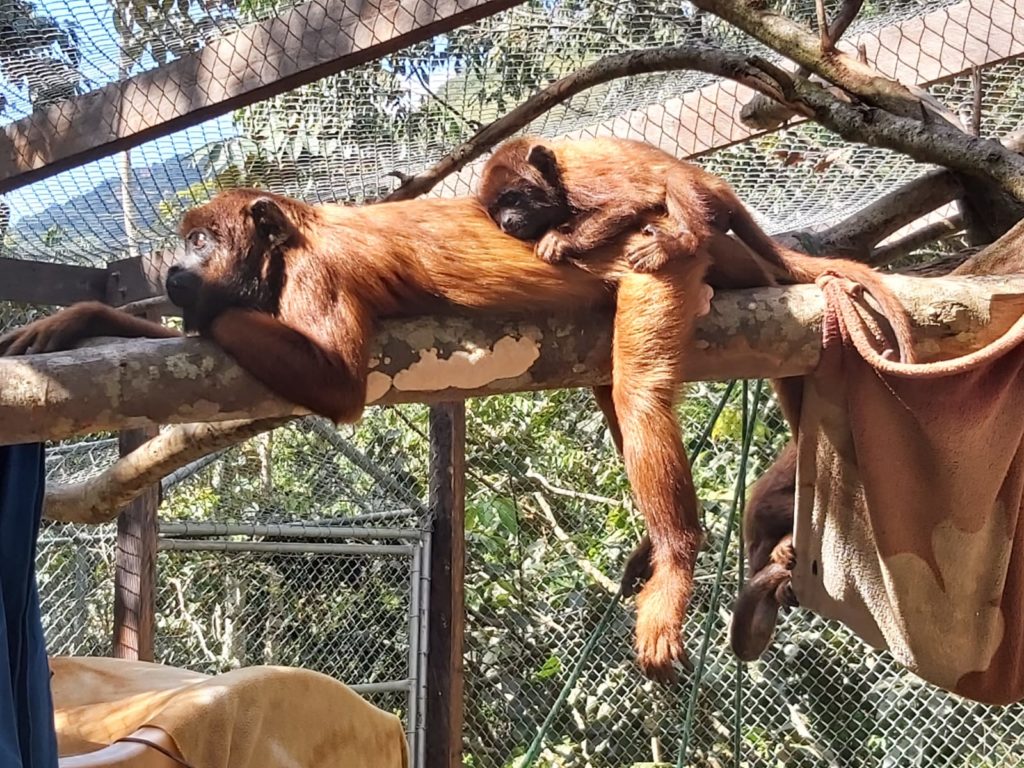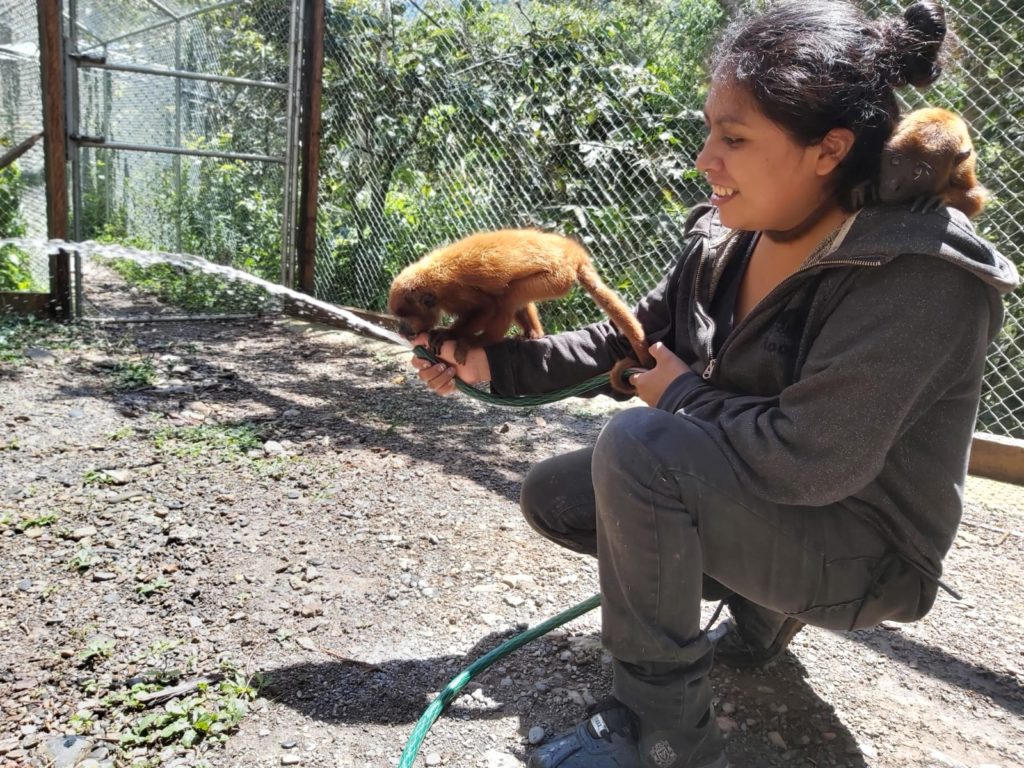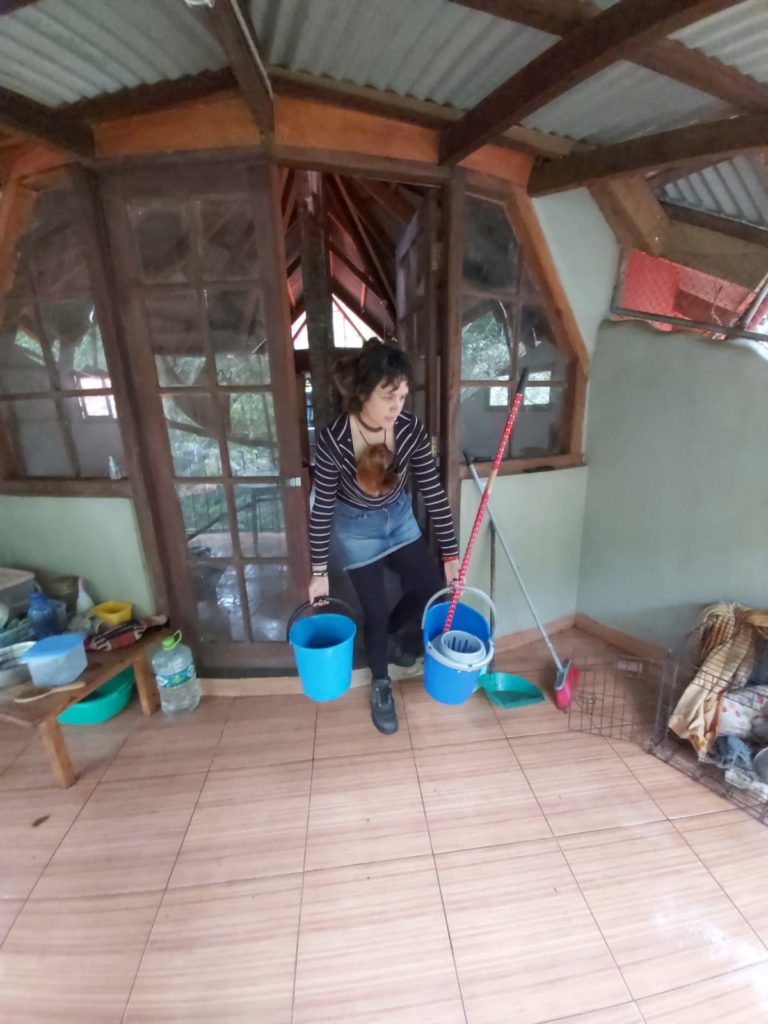This is the album of our new fundraising campaign Howl of help from the howlers.
Here we introduce you to the young howler monkeys we build the nursery cage for and say thank you to our supporters.
All the primates you see in this album are victims of the illegal wildlife trade, which is the second biggest threat to wild animals after habitat loss.
9 out of 10 animals taken from the wild die. Senda Verde takes in the survivors and gives them a new chance on life.
They are the ambassadors of their species.
They are the wakeup call for us humans.
Surrogate mother Lorena is a volunteer @ Senda Verde helping to take care of the howler monkeys. She also took / organised all the pictures and videos in this album. ❤ Here you see her on the way to one of the temporary cages, so the little ones can learn to climb and interact with each other, but they desperately need a proper nursery cage. Will you help?
Primates are very popular exotic pets – especially in South America, the US and Europe.
When primates are hunted to be sold alive, the mother animal gets killed first in order to capture the young.
The brutal capture is followed by a long, horrific transport from the jungle to the local black market and finally overseas.
Only 1 out of 10 animals survives this torture.
Already established drug and human trafficking routes are used for wild animals too.
The surviving animals suffer from deep psychological traumas and also physical wounds and are showing abnormal behavioural traits.
Learning how to climb on branches is vital for the youngsters – as well as is playing, so they can learn how to interact in a troop.
In nature, these young howler monkeys would have spent the first two years with their mother giving them the necessary protection. Illegal wildlife trafficking has taken this safety and life at the shelter is risky despite all efforts.
Let’s give these souls the best chance on growing up save and sound – by building their nursery cage:
Campaign “Howl of help from the Howlers”

